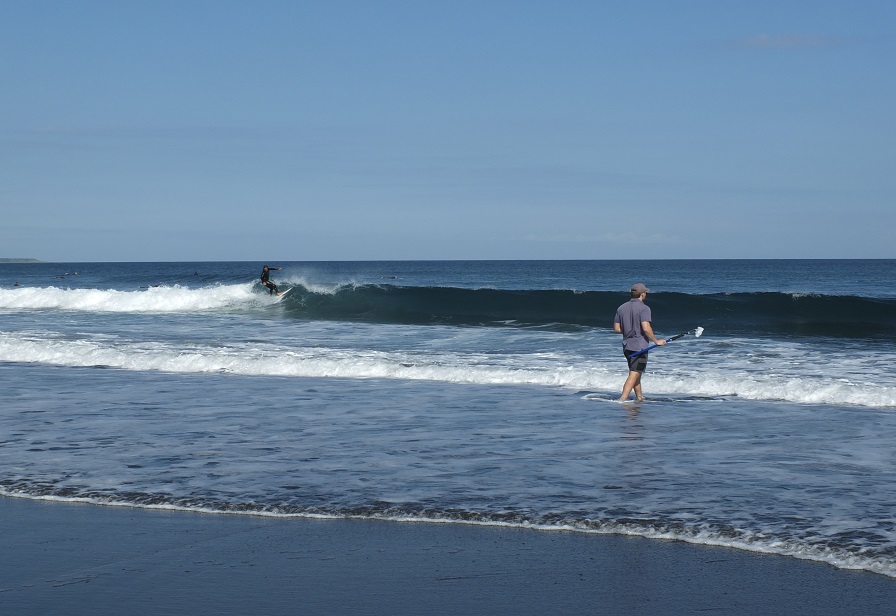People heading out to swimming spots across Taranaki this summer are being encouraged to wait a few days after heavy rain before diving in.

Taranaki Regional Council’s summer “Can I Swim Here?" monitoring programme starts this week, running through until the end of March 2024. Every Tuesday staff will take water samples at 41 popular swimming spots at lakes, rivers and beaches across the region.
Results take two days to come back from the lab, and are posted on the Land, Air, Water Aotearoa (LAWA) and Council websites.
Council Water Quality Scientist Angela Collins says as water conditions can change quickly, swimmers should take simple precautions to keep themselves, their families and pets healthy.
“The biggest one is to avoid swimming for three days after heavy or prolonged rainfall. That means any rain that leads to surface run-off, where you might see lots of water flowing in the gutters.
“Rain washes pollutants, including animal and bird faeces, from the land into rivers, lakes and the sea which can make them temporarily unsafe for swimming.
“Water quality usually returns to normal after three days of fine weather.”
Ms Collins says any time water doesn’t look or smell right, it’s safest to stay out.
“If you can’t see your feet in knee-deep water, or if the water smells unpleasant, wait another day or two for the water to run clear before going for a dip.
“It’s just not worth the risk of getting sick.”
Some monitored sites are generally unsuitable for swimming, even during fine weather conditions. Permanent warnings have been established at those sites with persistent water quality issues, such as Te Hēnui Stream at the river mouth and the Waimōku Stream mouth on Oākura Beach.
The warmer temperatures and extended sunlight hours over summer also make for good conditions for cyanobacteria (also known as blue-green algae) to form algal blooms.
Ms Collins advises lake users to keep an eye out for green or brown particles in water, surface scum or green globules. In rivers, watch out for dark brown and black mats forming on rocks and boulders, which can become exposed when river levels drop. These are signs of toxic blue-green algae that may cause illness in people and animals who swim in the water.
For more information on the Can I Swim Here? monitoring programme, including long-term swimmability grades, weekly test results and current health warnings, go to www.trc.govt.nz/can-i-swim-here/(external link).